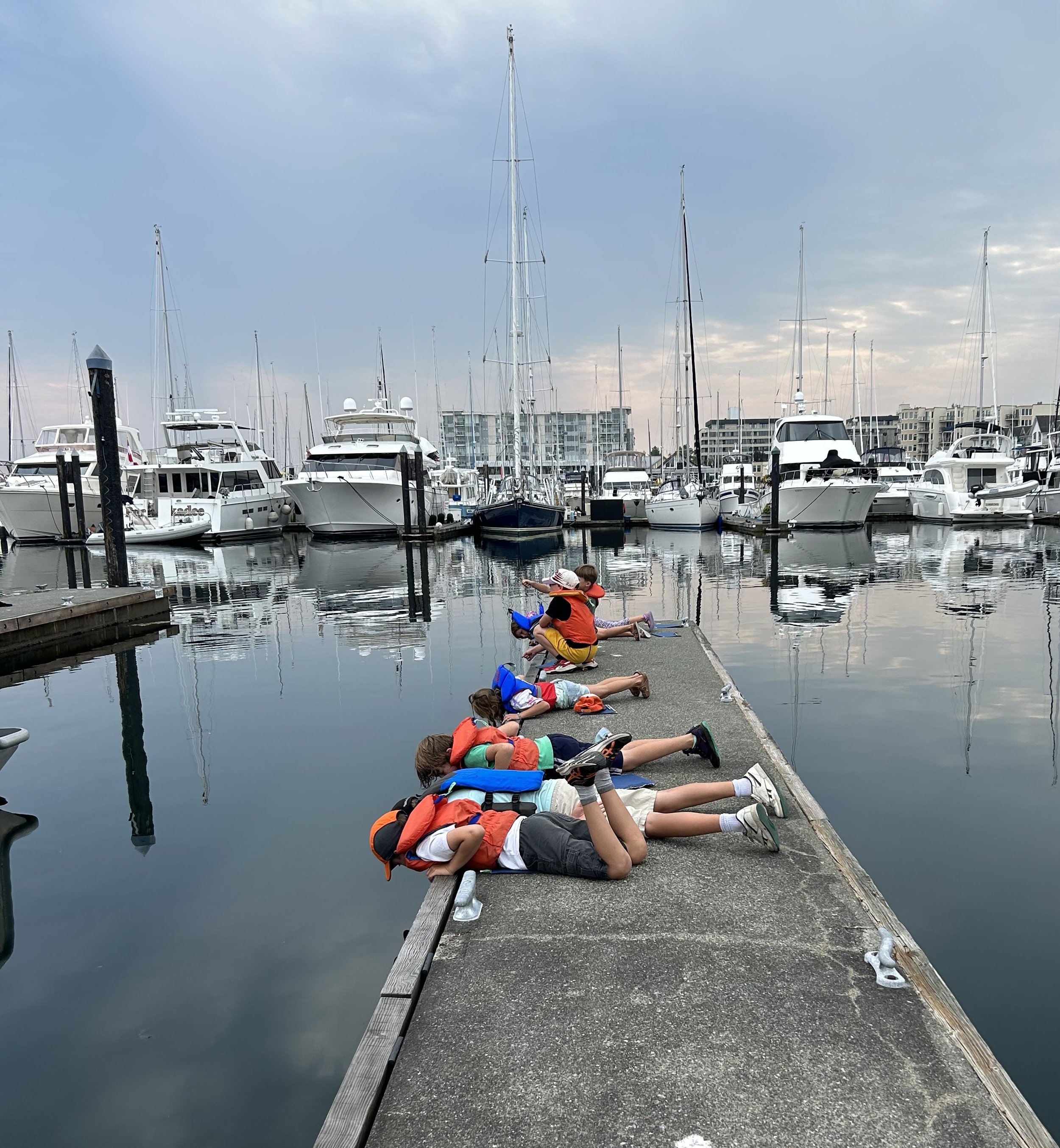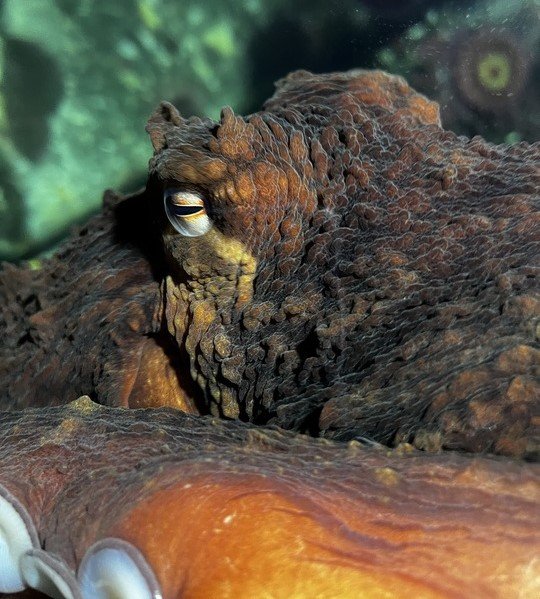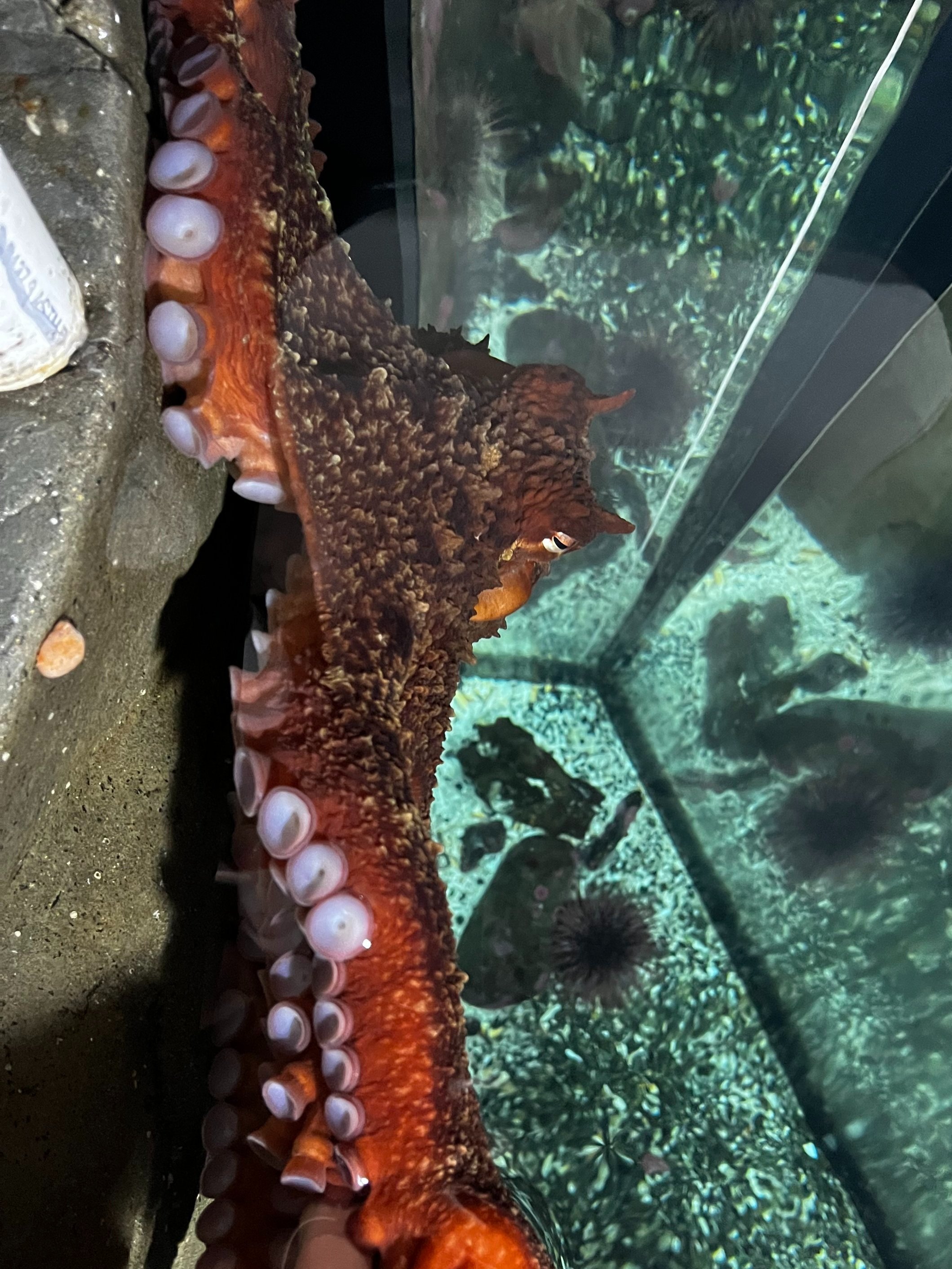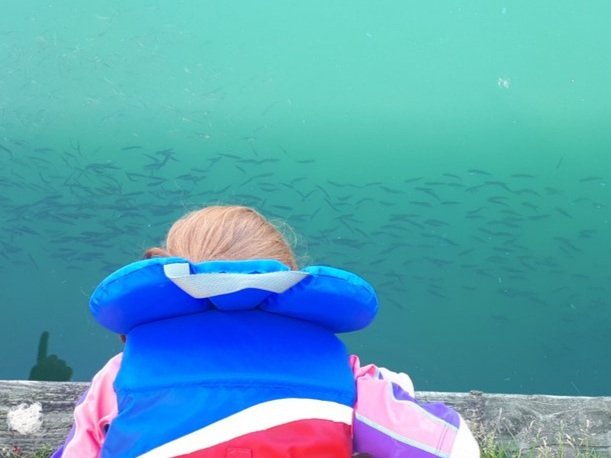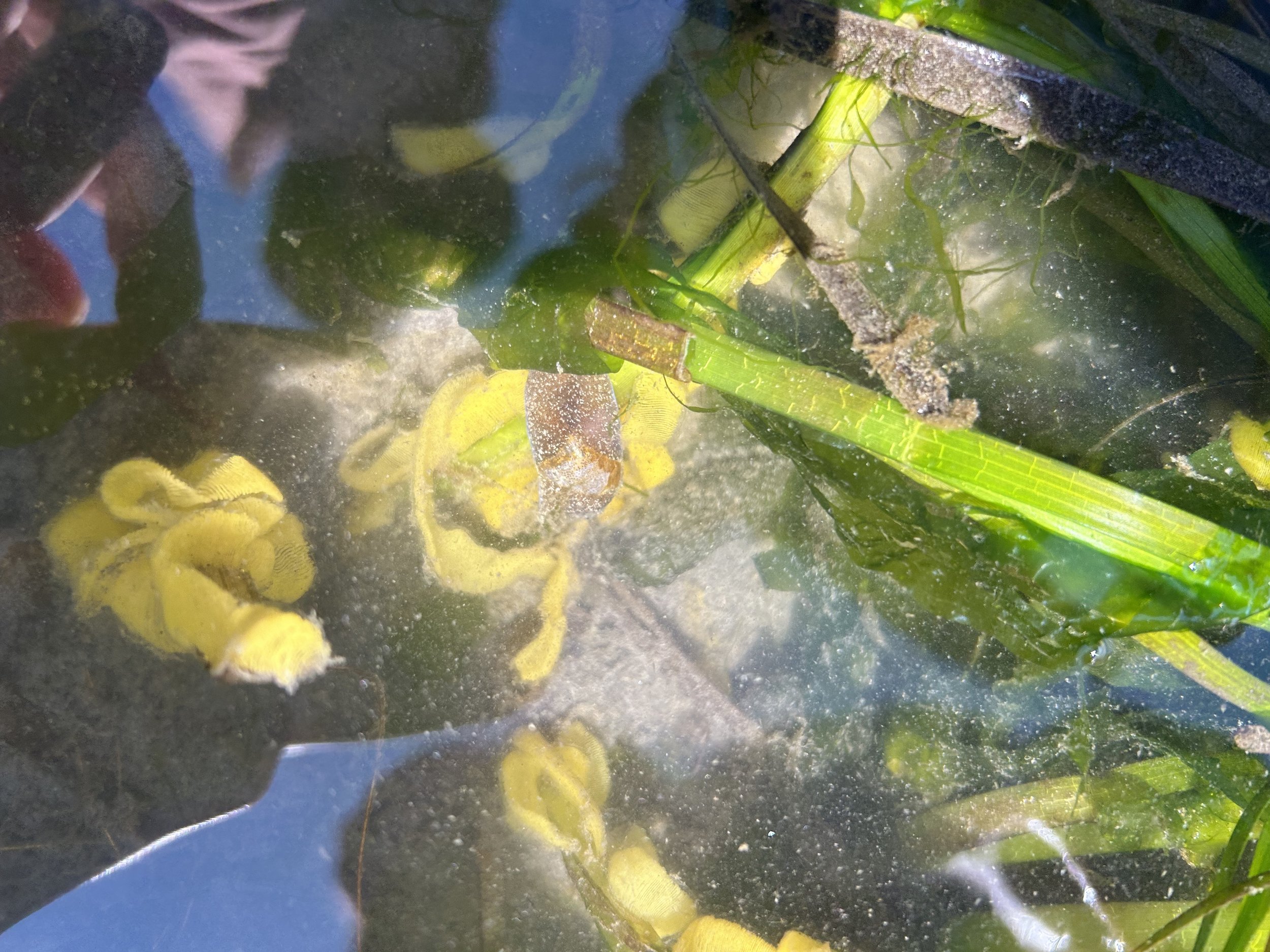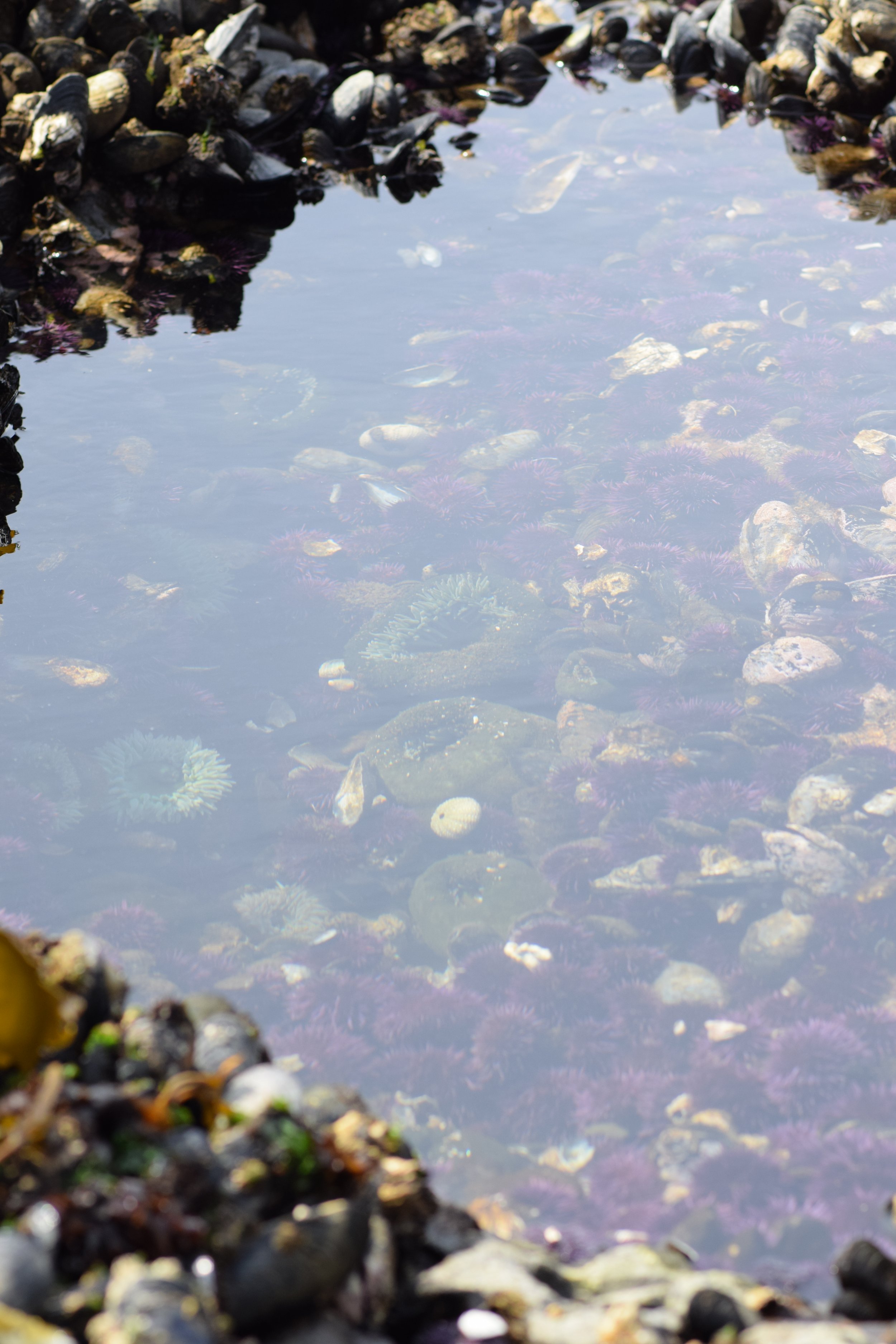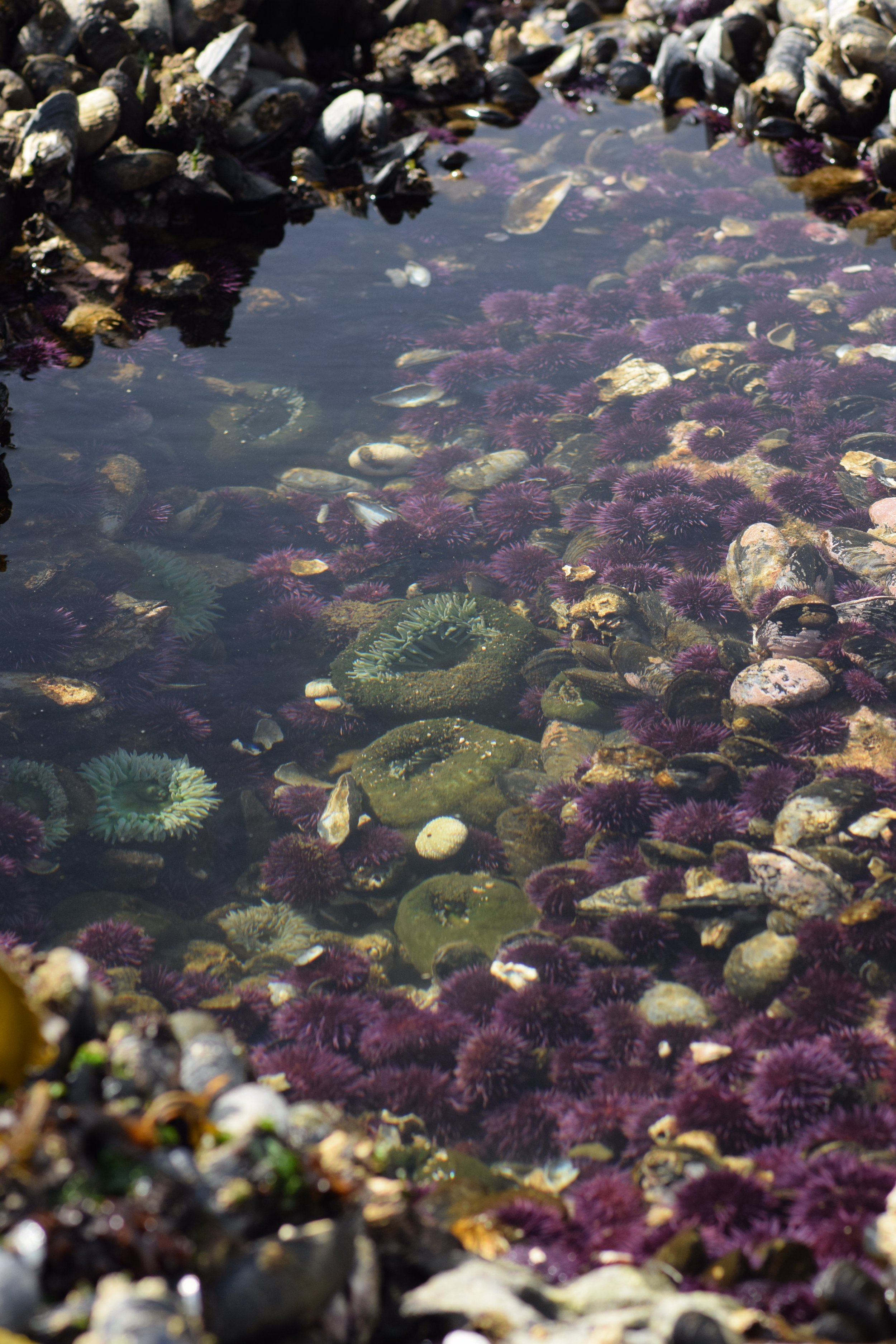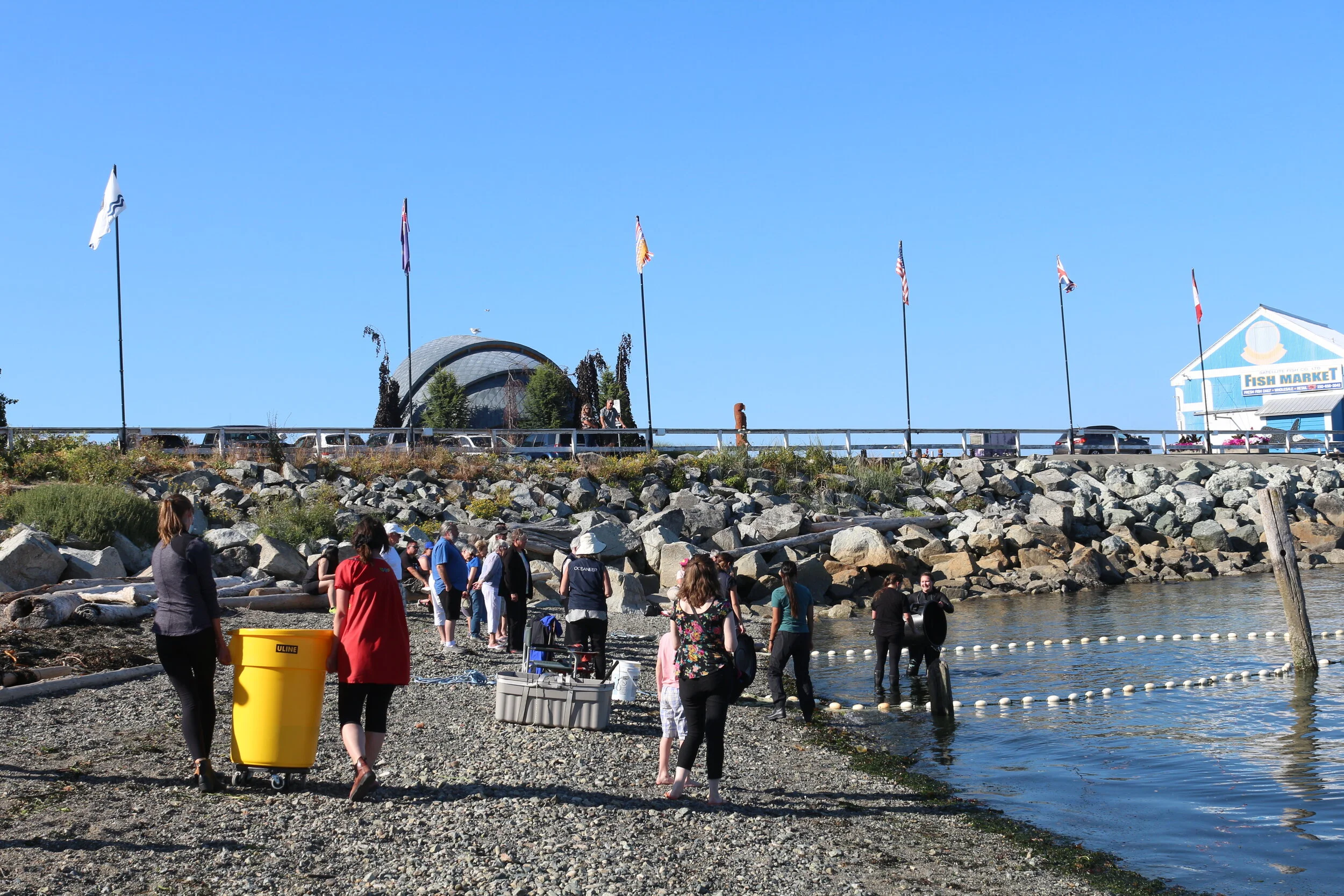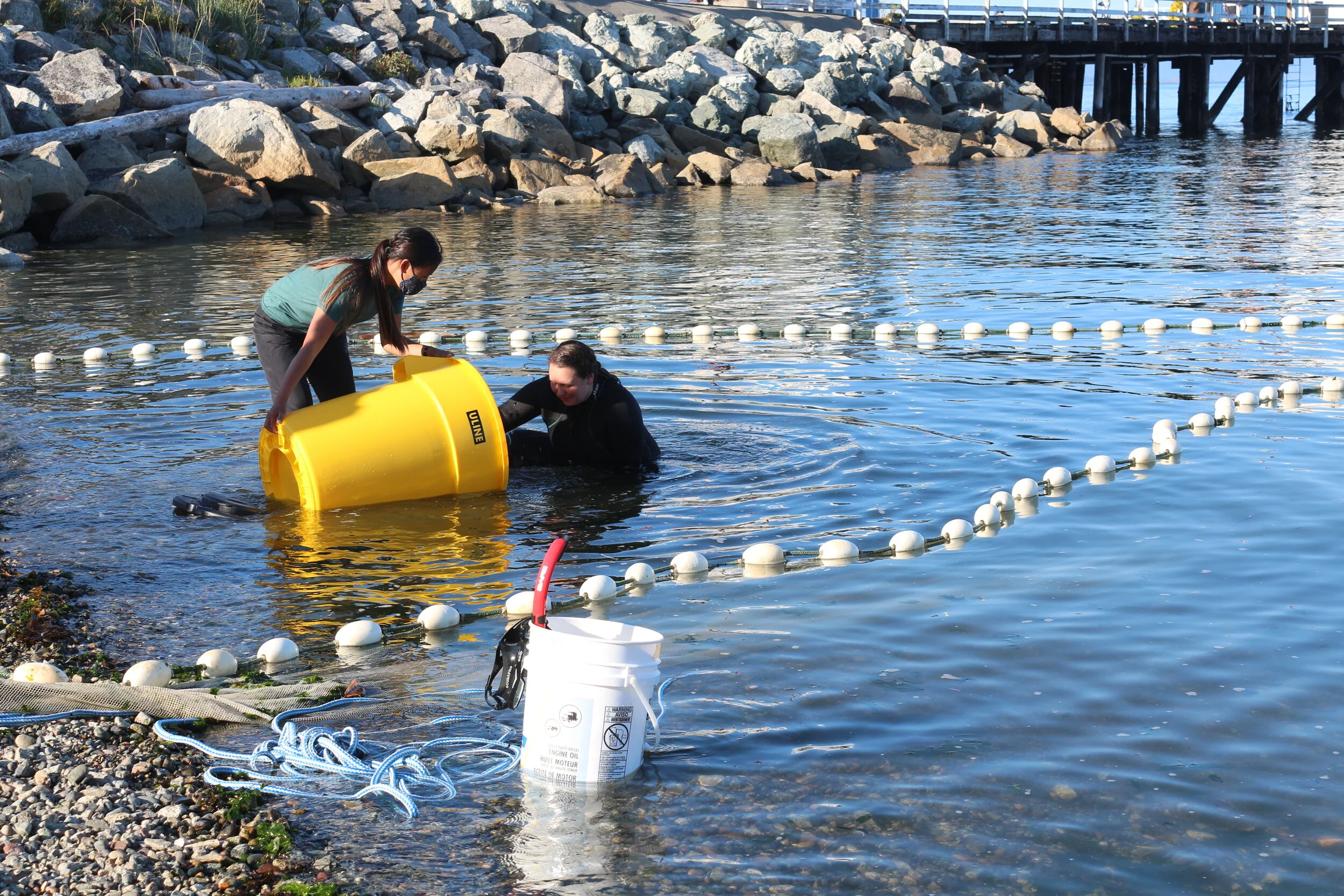Welcoming Spring: Blue Skies, Blossoms, and Lots of Birds!
by Aby Elwood, Educator
Oregon grape. Photo: Tina Kelly
What does the start of springtime feel like to you? Is it when the sun peeks through the curtains a little earlier? Is it when you hear bees buzzing? Or is it when colourful flowers begin to pop up everywhere you look? For me, the start of spring is when I wake up to the cheerful chirping of birds outside my window.
Mergansers
What happens in spring?
Spring is the season of new beginnings. Trees grow new leaves, flowers bloom, some animals wake up from their long winter nap, and new life begins. Spring is an especially important season for birds. It is a time of year when it is easier to notice their presence. Many species, such as golden eagles, varied thrush, and Western sandpipers, travel northward returning from spending winter down South. Upon returning from their long journey, they spend time finding food and finding a mate. As the weather warms food, like nectar, berries, seeds, and insects, are more readily available, making birds appear more active than in the winter months.
Gull. Photo: Bob Orchard
For most bird species, spring is also when they begin building or repairing their nests. The reason you hear so many birds vocalizing in spring is because they are using their songs to find a mate. Many birds also use their colouration or other physical attributes or displays to lure a mate.
Cormorant. Photo: Bob Orchard
Birds are everywhere!
British Columbia is home to an abundance of bird species. Birds can be spotted out your window, in your yard, in a local park, and from the street. Among the recognizable, common birds are crows, gulls, and bald eagles. Among the less recognizable are smaller species, such as sparrows, chickadees, and wrens. They can be spotted flying between trees and bushes. Larger predatory birds, like vultures, owls, and hawks perch on street lights, sit on the branches and glide above you.
Spot birds on beaches and on the water. These include sandpipers, cormorants, and different species of ducks. The next time you are at the beach, out in the community, or even looking out your window, take a moment to search for a bird you’ve never seen before.
Click for common
Backyard Birds
Tips for respectful birdwatching!
Birdwatching is one of my hobbies and is my favourite springtime activity. The Salish Sea has a large diversity of birds, and I encourage experiencing them for yourselves. It’s important we are “tweeting” our feathered friends with respect. Here are my tips to be a respectful birdwatcher.
Barred owl. Photo: Aby Elwood
Keep quiet. Noise is one of the biggest disturbances for wildlife. When you are looking for birds, keep your voice low. If voices and noises are too loud, birds will flee the area, forcing them to use energy unnecessarily. And you won’t have birds to admire!
Keep your distance. Getting too close to a bird can cause agitation and force them to modify their behaviour. Keep an appropriate distance between yourself and the animal you are looking at. Bird nests should always be viewed from a distance, as parents and chicks are particularly sensitive to disturbance. Binoculars are a great tool to use for admiring birds and nests.
Stay on designated trails. Trails are meant to be walked on, but the surrounding vegetation is not. Sticking to designated trails is an easy way to respect the ecosystem and avoid disrupting habitats. Keeping your dogs on the trails, and on leash, is another way to minimize an impact on birds and other animals.
Look for clues. Birds can be hard to find but that doesn’t mean they aren’t there. Look for clues that a bird is nearby. You might see a bird's nest in a tree, or you find evidence of their foraging behaviour, like woodpecker holes. Listen for calls and songs. Bird calls are unique to a species and you can learn to identify a species without even seeing it.
Leave human food for humans. Don’t bait or feed birds with food from home. They have evolved to eat specific foods and other foods can have a negative impact.
House sparrow. Photo: Aby Elwood
Nature Activities for springtime
Here are a few more ideas on how to appreciate the joy of springtime.
Bees on lavender. Photo: Aby Elwood
Go for a walk. Go outside and look for signs of spring. Take a walk in an area you haven’t explored before. The CRD has guided nature walks.
Create a nature journal. Draw pictures and/or make notes to record your nature observations.
Take up gardening. Gardening is a great way to get outside and learn about the life cycle of a plant. This can be a fun activity for adults and children.
Appreciate pollinators. Pollinators, like bees and butterflies, are key to maintaining healthy ecosystems. Planting native wildflowers is a great way to attract pollinators and watch them do their magic.
Make your windows safe for birds. Birds can be confused by reflections in glass, causing them flying into windows. Adding netting or a screen on the outside of a window is effective for preventing collisions. If you want to get creative, adding tempura paint, stickers, decals, and even sticky notes onto your windows (in an evenly spaced, grid-like pattern) are good ways of preventing window strikes.
From birds to blossoming flowers and buzzing bees, there are so many ways to get out and familiarize yourself with what nature has to offer in the spring. Hope you get to truly experience SPRING!
To learn more about birds, visit our new feature exhibition, Drawing Connections: 40 Years of Art and Hope for the Salish Sea.














